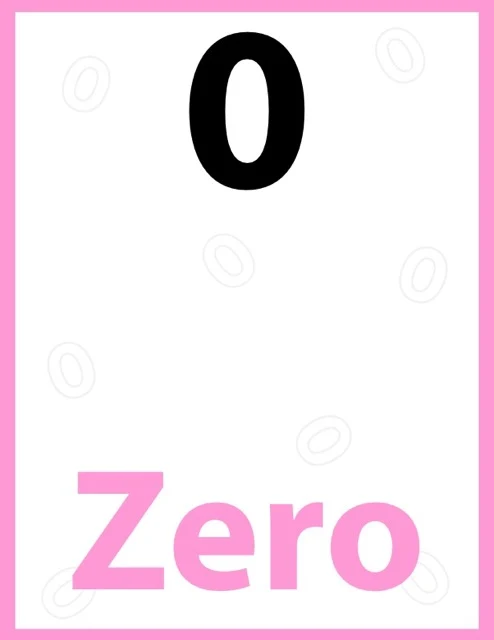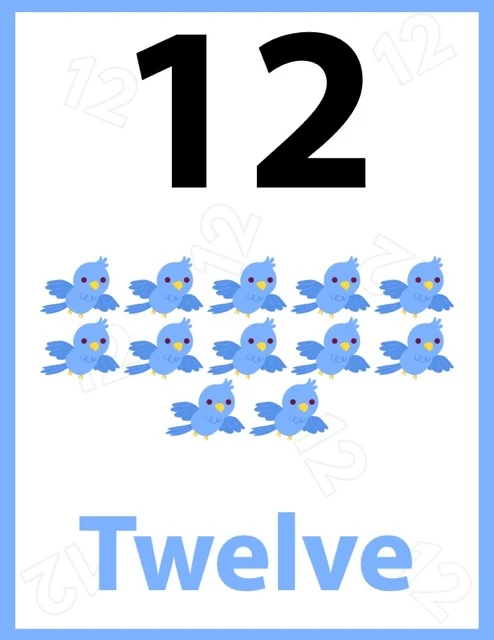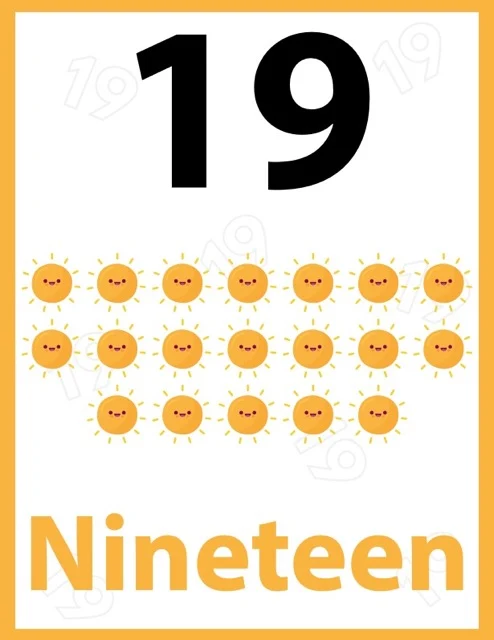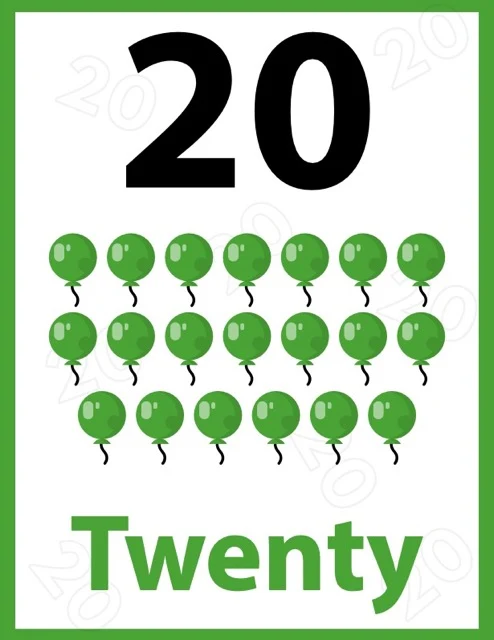Number Sense in Early Childhood
This document emphasizes the importance of number identification in early childhood development, highlighting its role as a foundational skill for future mathematical success and overall cognitive growth. It details effective teaching strategies, including multi-sensory approaches and engaging activities, and suggests ways to identify and support children who are struggling. The document stresses the need to connect number learning to real-world applications and advocates for early intervention to address difficulties. Finally, it lists helpful resources to aid in teaching number identification.
Number Identification in Early Childhood
Briefing Doc: Number Identification in Early Childhood
Main Themes:
●
Foundational Skill: Number identification is a critical building block for further mathematical understanding and overall cognitive development.
●
Real-World Relevance: Number identification is essential for navigating everyday life, emphasizing the importance of connecting learning to practical applications.
●
Playful Learning: Engaging games and activities are crucial for keeping children motivated and making the learning process enjoyable.
●
Multi-Sensory Approach: Incorporating various senses (sight, hearing, touch) enhances understanding and caters to different learning styles.
●
Early Intervention: Recognizing and addressing difficulties with number identification early on is key to supporting children's mathematical development.
Most Important Ideas/Facts:
●
Definition: Number identification is "the ability to recognize and name numbers, connecting number symbols to their corresponding quantities."
●
Importance:
○
Forms the foundation for advanced math skills (counting, addition, subtraction, problem-solving).
○
Crucial for everyday tasks (telling time, measuring, shopping).
○
Develops cognitive skills (visual discrimination, memory, logical thinking).
●
Learning Methods:
○
Counting objects.
○
Number songs and rhymes.
○
Visual aids (charts, flashcards).
○
Games and activities.
●
Teaching Tips:
○
Concrete to Abstract: "Start with concrete examples...to help children understand the concept of quantity before introducing number symbols."
○
Engaging Learning: "Make it fun and engaging...to keep children motivated and interested in learning."
○
Real-Life Connections: "Connect numbers to real-life situations...such as on clocks, calendars, and street signs."
●
Signs of Struggle:
○
Difficulty recognizing and naming numbers.
○
Confusing similar-looking numbers.
○
Inability to count objects accurately.
●
Supporting Struggling Learners:
○
Extra practice and support.
○
Breaking down the skill into smaller steps.
○
Multi-sensory approaches.
○
Seeking professional help if needed.
●
Developmental Progression:
○
Children typically begin recognizing numbers 0-10 between ages 3 and 5.
○
Progress to larger numbers, place value, and more complex mathematical operations.
●
Resources:
○
Educational apps and websites.
○
Books and workbooks.
○
Manipulatives and learning toys (number blocks, counting bears).
○
Consultation with educators.
Visual Aid:
The included visual aid provides a clear and engaging representation of numbers 0-20, incorporating both numerical symbols and corresponding quantities of objects for each number. This type of visual tool is beneficial for children learning number identification as it aids in visualization and memorization.
Conclusion:
Number identification is a fundamental skill that lays the groundwork for mathematical proficiency and overall cognitive development in young children. Utilizing a variety of engaging, multi-sensory teaching methods and providing early intervention when necessary can help all children build a strong foundation for future learning.
Number Identification: A Comprehensive Guide
Number Identification FAQ
What is number identification?
Number identification is the ability to recognize and name numbers. This is a foundational math skill that children begin learning in early childhood. It involves understanding the symbols that represent numbers and being able to connect those symbols to the corresponding quantities.
Why is number identification important?
Number identification is a crucial skill for many areas of learning and development. It is essential for:
●
Further math skills: Number identification forms the basis for more complex math concepts such as counting, addition, subtraction, and problem-solving.
●
Everyday life: We use numbers constantly in our daily lives, from telling time to measuring ingredients to making purchases.
●
Cognitive development: Learning to identify numbers helps children develop important cognitive skills such as visual discrimination, memory, and logical thinking.
How do children learn to identify numbers?
Children learn number identification through various activities and experiences, including:
●
Counting objects: Physically manipulating and counting objects helps children connect number symbols to actual quantities.
●
Number songs and rhymes: Engaging with songs and rhymes that incorporate numbers makes learning fun and reinforces number recognition.
●
Visual aids: Using charts, flashcards, and other visual tools that display numbers and their corresponding quantities can aid in visualization and memorization.
●
Games and activities: Incorporating number identification into play activities, such as board games or matching games, makes learning interactive and engaging.
What are some tips for teaching number identification?
●
Start with concrete examples: Begin with manipulatives like blocks or toys to help children understand the concept of quantity before introducing number symbols.
●
Make it fun and engaging: Use games, songs, and interactive activities to keep children motivated and interested in learning.
●
Use repetition and practice: Provide opportunities for repeated exposure to numbers through various methods.
●
Connect numbers to real-life situations: Point out numbers in everyday life, such as on clocks, calendars, and street signs.
What are some signs that a child may be struggling with number identification?
●
Difficulty recognizing and naming numbers: The child may have trouble consistently identifying numbers 0-20.
●
Confusing similar-looking numbers: The child may mix up numbers like 6 and 9 or 3 and 8.
●
Inability to count objects accurately: The child struggles to match one number to one object when counting.
What can parents and educators do to help a child who is struggling with number identification?
●
Provide extra practice and support: Spend dedicated time working on number recognition using various methods.
●
Break down the skill into smaller steps: Focus on smaller groups of numbers at a time and gradually increase the range.
●
Use multi-sensory approaches: Engage multiple senses through activities that involve seeing, hearing, and touching numbers.
●
Seek professional help if needed: Consult a teacher, learning specialist, or educational psychologist for further assessment and guidance.
How does number identification progress as children develop?
Children typically begin recognizing numbers 0-10 in preschool. As they progress, they learn to identify larger numbers, understand place value, and work with numbers in increasingly complex ways. The pace of learning can vary depending on the individual child.
What are some resources for supporting number identification development?
●
Educational apps and websites: Many online resources offer interactive games and activities focused on number identification.
●
Books and workbooks: Look for age-appropriate books and workbooks that focus on number recognition and counting.
●
Manipulatives and learning toys: Number blocks, counting bears, and other manipulatives can provide hands-on learning experiences.
●
Consult with educators: Teachers and early childhood specialists can provide recommendations for materials and activities based on your child's needs.
Number Identification: A Comprehensive Guide
Number Identification: Study Guide
Short-Answer Questions:
1.
What are three reasons why number identification is a crucial skill for children to develop?
2.
Describe two ways in which visual aids can be helpful when teaching number identification.
3.
How might incorporating games and activities into learning make the process of number identification more effective for children?
4.
Explain the importance of starting with concrete examples when teaching number identification to young children.
5.
Why is connecting numbers to real-life situations beneficial for children learning to identify numbers?
6.
List three signs that a child might be struggling with number identification.
7.
What is a multi-sensory approach to teaching number identification, and why might it be helpful?
8.
If a child is having difficulty identifying numbers, what are two steps parents or educators can take to help them?
9.
What is a typical age range when children begin to recognize numbers 0-10?
10.
Apart from educational apps and websites, suggest two other resources that can be used to support number identification development in children.
Short-Answer Key:
1.
Three reasons why number identification is crucial: It forms the basis for further math skills, it's essential for navigating everyday life (telling time, measuring, etc.), and it contributes to cognitive development (visual discrimination, memory, logical thinking).
2.
Visual aids can help by: Providing a clear visual representation of numbers and their corresponding quantities, aiding in visualization and memorization of number symbols. Examples include charts, flashcards, and number posters.
3.
Games and activities: Make learning interactive and engaging, keeping children motivated and interested. They provide hands-on experiences and opportunities to practice number identification in a fun context.
4.
Starting with concrete examples: Helps children understand the concept of quantity before abstract number symbols are introduced. Manipulatives like blocks or toys allow them to physically experience and visualize numbers.
5.
Connecting to real-life: Reinforces the relevance and practical application of number identification. Seeing numbers on clocks, calendars, prices, etc., demonstrates their use in everyday situations.
6.
Signs of struggle: Difficulty recognizing and naming numbers, confusing similar-looking numbers (6 and 9, 3 and 8), inability to count objects accurately (matching one number to one object).
7.
Multi-sensory approach: Involves engaging multiple senses (seeing, hearing, touching) during learning. This can cater to different learning styles and enhance memory and understanding. Examples include using textured number cards or singing number songs while manipulating objects.
8.
Steps to help a struggling child: Provide extra practice and support with dedicated time for number recognition activities. Break down the skill into smaller steps by focusing on smaller groups of numbers at a time.
9.
Typical age for recognizing 0-10: Preschool, typically between the ages of 3 and 5.
10.
Resources for number identification: Books and workbooks specifically designed for number recognition and counting. Manipulatives and learning toys like number blocks, counting bears, etc., provide hands-on learning experiences.
Essay Questions:
1.
Discuss the importance of play-based learning in developing number identification skills in young children. Provide specific examples of games and activities that can be effective.
2.
How does number identification serve as a foundation for more complex mathematical concepts? Explain the progression of number-related skills that children develop, building upon number identification.
3.
Analyze the challenges that children with learning disabilities might face in developing number identification skills. Describe strategies and interventions that educators and parents can implement to support these children.
4.
Evaluate the role of technology in teaching number identification. Discuss the benefits and potential drawbacks of using educational apps and websites for this purpose.
5.
Explain how cultural differences might influence the ways in which children learn and understand number concepts. Provide examples to illustrate your points.
Glossary of Key Terms:
●
Number Identification: The ability to recognize and name numbers, connecting number symbols to their corresponding quantities.
●
Visual Discrimination: The ability to distinguish between different visual stimuli, such as shapes, colors, and patterns.
●
Manipulatives: Physical objects used as learning tools to represent mathematical concepts, enabling hands-on exploration.
●
Multi-sensory Learning: Engaging multiple senses (sight, hearing, touch, etc.) during the learning process to enhance understanding and memory.
●
Cognitive Development: The development of mental processes involved in thinking, learning, reasoning, problem-solving, and memory.
●
Place Value: The value of a digit based on its position within a number (e.g., units, tens, hundreds).




















